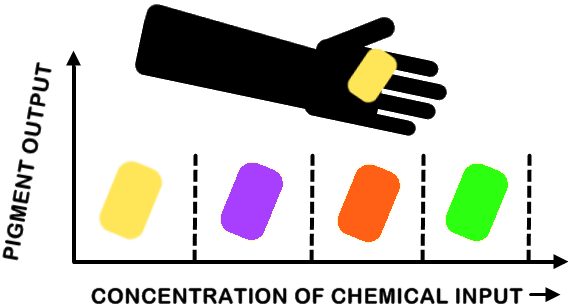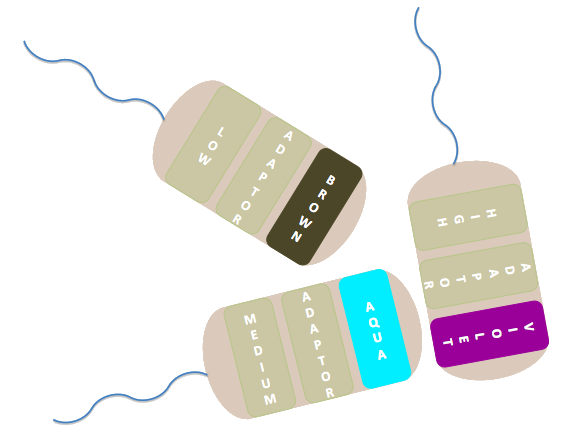Team:Cambridge
From 2009.igem.org
Categories :
Project :
-
Overview
Sensitivity Tuner
--- Characterisation
--- Modelling
Colour Generators
--- Carotenoids (Orange/Red)
--- Melanin (Brown)
--- Violacein (Purple/Green)
The Future
Safety
Notebook :
Team Logistics :
Overview
Previous iGEM teams have focused on genetically engineering bacteria to respond to novel inputs – for example light, or biologically significant compounds. There is an unmistakable need, therefore, to also develop clear, user-friendly outputs, especially for use with biosensors. The most popular output is the expression of a fluorescent protein, detectable using fluorescence microscopy. However, how much easier would it be if we could simply see the output with our own eyes?
The Cambridge 2009 iGEM team is engineering E. coli to produce different pigments in response to different concentrations of an inducer. Our device is a three part system:
Sensor: Our sensor system is sensitive to different concentrations of an inducer.
Adaptor: The adaptor is an amplifier. The amplifier is responsible for the sensitivity to the inducer, and acts as an "on" switch to maximally activate pigment production once the inducer has reached a threshold.
Colour: Pigment production
Thus, we can develop a population of mixed strains of bacteria. The concentration of the inducer to which they are exposed determines which strains are activated to produce pigment.
 "
"


